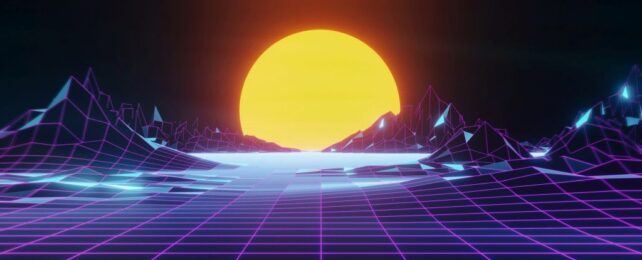The scent of coffee. The clarity of sunlight dappling through the trees. The howl of the wind in the dark of night.
All this, according to a philosophical argument published in 2003, could be no more real than pixels on a screen. It's called the simulation hypothesis, and it proposes that if humanity lives to see a day it can repeatedly simulate the Universe using some kind of computer, chances are we are living in one of those many simulations.
If so, everything we experience is a model of something else, removed from some kind of reality.
It's more of a thought experiment than anything – but scientists do love poking it to see if anything squirms. And a new poke has hinted at something squirming.
The second law of infodynamics devised by University of Portsmouth physicist Melvin Vopson and mathematician Serban Lepadatu from the Jeremiah Horrocks Institute for Mathematics, Physics and Astronomy in the UK supports the notion that all of this is nothing more than a sophisticated model on a rather fancy computer.
"The 2022 discovery of the second law of information dynamics (infodynamics) facilitates new and interesting research tools at the intersection between physics and information," Vopson writes in a new paper published in AIP Physics.
"In this article, we re-examine the second law of infodynamics and its applicability to digital information, genetic information, atomic physics, mathematical symmetries, and cosmology, and we provide scientific evidence that appears to underpin the simulated universe hypothesis."
Vopson's and Lepadatu's second law of infodynamics is based on the second law of thermodynamics, which states that any naturally occurring process in the Universe will result in a loss of energy and increase in a system's measure of disorder, or entropy.
Vopson, who has proposed that information could in fact be considered a form of matter, expected that the same would be true of information systems; that, over time, its own kind of disorder ought to increase over time as well.
However, studying two different information systems – digital data storage and an RNA genome – he found that this was not the case. The second law of infodynamics requires 'information entropy' to either remain at the same level, or even decrease over time.
"I knew then that this revelation had far-reaching implications across various scientific disciplines," Vopson says. "What I wanted to do next is put the law to the test and see if it could further support the simulation hypothesis by moving it on from the philosophical realm to mainstream science."
In his new paper, the physicist explores what this new law means for a range of fields, such as genetics, cosmology, atomic physics, symmetry… and, of course, the simulation hypothesis.
For genetics, Vopson analyzed RNA sequences of different variants of SARS-CoV-2. He found that all analyzed variants showed a decrease in information entropy as they underwent mutation. The findings also suggested that there was some mechanism governing mutation under the second law of infodynamics, rather than just random chance.
He also found that electrons in an atom arrange themselves in such a way as to minimize information entropy; and that, in order for the Universe to continue to expand, the increase in physical entropy must be balanced by a corresponding decrease in information entropy.
And the prevalence of symmetry in the Universe – from a small snowflake to a stunning spiral galaxy – can be explained by the second law of infodynamics too.

"Symmetry principles play an important role with respect to the laws of nature, but until now there has been little explanation as to why that could be. My findings demonstrate that high symmetry corresponds to the lowest information entropy state, potentially explaining nature's inclination towards it," Vopson says.
"This approach, where excess information is removed, resembles the process of a computer deleting or compressing waste code to save storage space and optimize power consumption. And as a result supports the idea that we're living in a simulation."
The next steps will be to validate these findings experimentally. If we are living in a simulation, then information is the fundamental building block of our Universe – like bits are the fundamental unit of information in computing – and may, Vopson has previously proposed, have mass.
If this is the case, then it may be detected via the annihilation of information in particle-antiparticle collisions.
Of course, as a compressed and optimized simulation, our modelled Universe would need to be programmed by some deeper, more complex system, posing an even bigger set of questions.
Perhaps one day somebody might even be able to come up with a program we could run to answer them.
The research has been published in AIP Advances.
